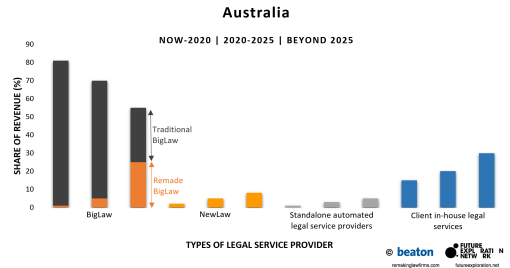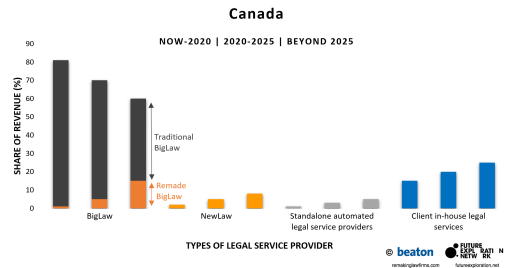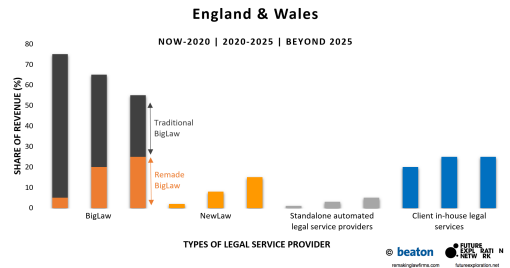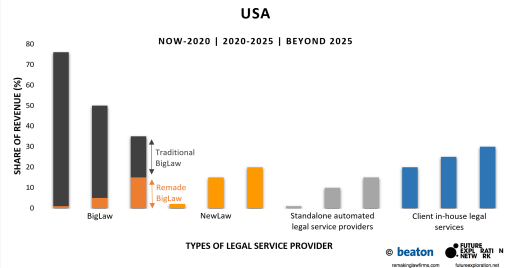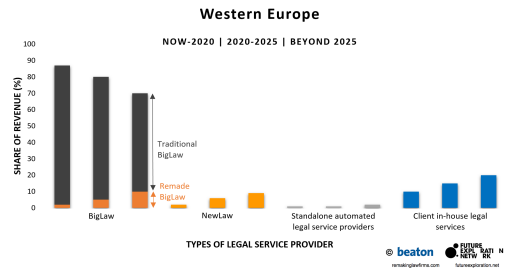Launch: Timeline for the future structure of the legal services industry
Our shared passion for the future of professional services has led George Beaton and I to collaborate on projects over many years.
George has long expressed his view that the traditional “BigLaw” model for legal services firms is under severe threat. He has just launched his latest book Remaking Law Firms to provide clear guidance on how law firms can adjust and reshape themselves for success in a rapidly changing world.
Drawing on the concept of my Newspaper Extinction Timeline, George and I collaborated to create a timeline for the changing structure of the legal services industry over the next decade and beyond across different geographies.
The full description to the legal services timeline describes in detail the mega-forces shaping the industry, the research methodology, and the outcomes.
Here are the legal services industry timelines we created for five regions, with below the charts descriptions of the types of legal services providers referenced.
Types of Legal Services Provider
Building on the taxonomy in ‘Fresh thinking on the evolving BigLaw–NewLaw taxonomy‘ (January 2015) and Remaking Law Firms (March 2016) we examined these five types of legal services provider:
1. Traditional law firms based on partnership, lawyer-centricty, leverage, and input-based pricing (known as BigLaw numbering at least 100,000 in the five regions) .
2. Remade law firms (probably better expressed as BigLaw firms in the process of being remade such as Allen & Overy and Seyfarth Shaw – both of which are featured in Remaking Law Firms).
3. NewLaw firms based on a quite different business model to BigLaw (read these posts for a deeper understanding of the range of NewLaw providers such Elevate, Conduit (recently acquired by Deloitte), and LOD).
4. Standalone automated legal services (based on information technology and artificial intelligence such as Lex Machina and KIM).
5. Legal departments rendering a wide range of legal services to their owner corporation.
For more details see the original post.

